Your cart is currently empty!
Blog
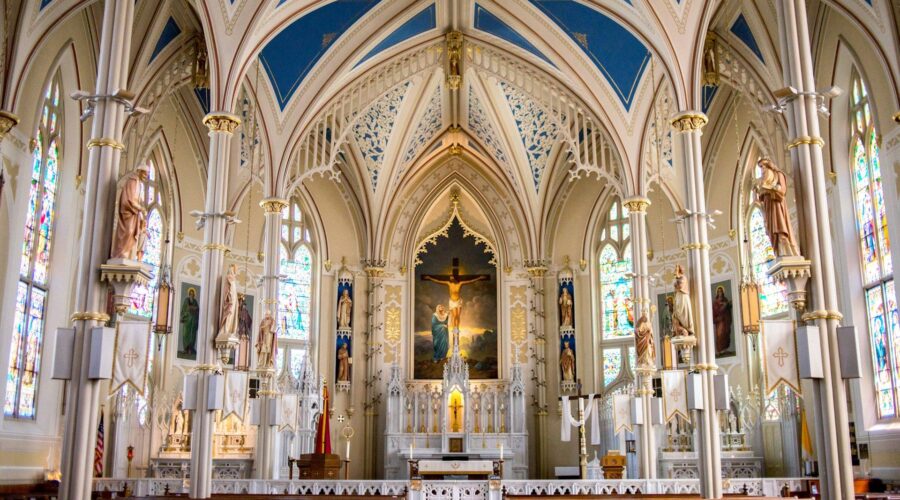
Discover the Enduring Legacy of Our Lady of Hope: A Beacon of Faith and Inspiration
Introduction
Our Lady of Hope is a venerated figure in Christianity, inspiring countless believers throughout history. Revered for her unwavering faith, compassion, and unwavering support, she stands as a beacon of hope in times of despair and a guiding light on the path to salvation. This comprehensive guide delves into the captivating story of Our Lady of Hope, exploring her origins, symbolism, and the profound impact she continues to have on the faithful.
Origins and History
The origins of Our Lady of Hope can be traced back to the early days of Christianity. As the faith spread throughout the Roman Empire, depictions of Mary, the mother of Jesus, emerged as symbols of hope and divine protection. Over time, specific titles and apparitions associated with Mary became associated with specific virtues and intercessions, including the title “Our Lady of Hope.”
Early Depictions and Veneration
Early depictions of Our Lady of Hope often portrayed her holding a child or surrounded by angelic figures, symbolizing her role as the mother of God and the hope she offers to believers. She was also depicted as a young woman, radiating with grace and beauty, representing the purity and innocence associated with her.
Symbolism and Attributes
The symbolism associated with Our Lady of Hope conveys her unique qualities and the virtues she embodies:
Anchor
The anchor is a common symbol associated with Our Lady of Hope. An anchor represents stability, steadfastness, and the hope that believers have in the midst of life’s storms.
Star
The star symbolizes guidance, direction, and the hope that leads believers toward salvation. Our Lady of Hope is often depicted with a star above her head or holding a star in her hand.
Lily
The lily is associated with purity, innocence, and the hope of eternal life. It is often depicted in depictions of Our Lady of Hope, symbolizing her virtuous nature and her role as a mediator of God’s grace.
Patronage and Intercession
Our Lady of Hope is invoked as a patron saint for various causes and situations, including:
Hopelessness and Despair
She is revered as a source of hope for those who face overwhelming challenges, offering solace and encouragement in times of distress.
Seafarers and Travelers
As the patron saint of seafarers and travelers, she is invoked for protection and guidance during journeys, whether by sea or land.
The Sick and Suffering
Our Lady of Hope is also venerated as a healer and comforter, interceding on behalf of the sick, the suffering, and those in need of healing.
Shrines and Pilgrimage Sites
Numerous shrines and pilgrimage sites around the world are dedicated to Our Lady of Hope, attracting countless devotees seeking spiritual renewal, healing, and hope.
Basilica of Our Lady of Hope, Lourdes, France
One of the most famous shrines is located in Lourdes, France, where Mary is said to have appeared to a young girl named Bernadette Soubirous in 1858. Millions of pilgrims visit Lourdes annually, seeking healing and spiritual upliftment.
Sanctuary of Our Lady of Hope, Pochaev, Ukraine
Another significant shrine is located in the Holy Dormition Pochaev Lavra in Pochaev, Ukraine. This monastery is home to a miraculous icon of Our Lady of Hope, which has been attributed with countless miracles and healings.
Feast Day and Celebrations
The feast day of Our Lady of Hope is celebrated on various dates depending on the specific tradition or region.
December 18 (Roman Catholic Church)
In the Roman Catholic Church, the feast day of Our Lady of Hope is celebrated on December 18.
May 1 (Eastern Orthodox Church)
In the Eastern Orthodox Church, the feast day is typically observed on May 1.
Prayer and Devotion
Prayer is a powerful way to connect with Our Lady of Hope and seek her intercession. Many traditional prayers and devotions are dedicated to her, including:
Novena Prayer to Our Lady of Hope
This nine-day prayer is recited to ask for hope, healing, and protection in times of need.
Litany of Our Lady of Hope
The Litany of Our Lady of Hope is a series of invocations that honor her virtues and intercessory power.
Conclusion
Our Lady of Hope remains an enduring symbol of hope, faith, and divine protection. Her story, symbolism, and patronage inspire countless believers worldwide, offering solace and encouragement in times of adversity. Through shrines, pilgrimage sites, and traditional prayers, devotees can connect with her and seek her intercession, finding hope amidst life’s challenges and guidance on the path to salvation.
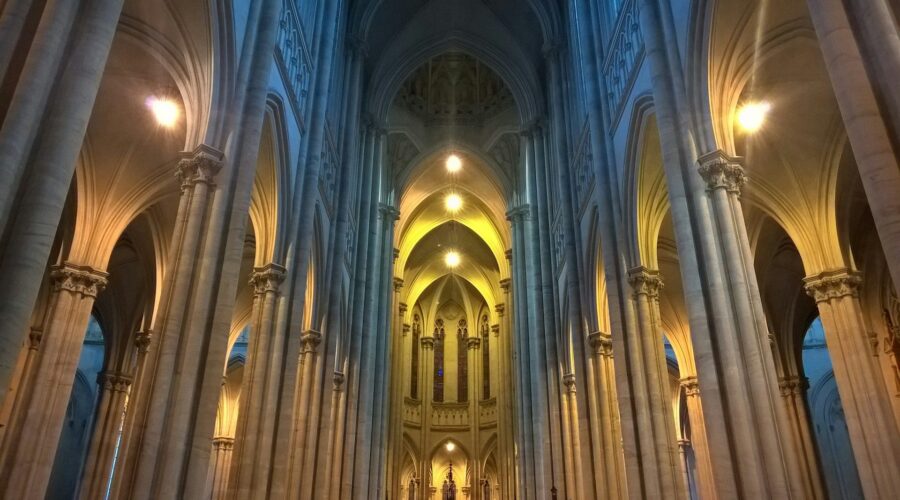
Discover the Enigmatic Church of the Apostles: A Journey into History and Faith
The Church of the Apostles, nestled in the heart of Rome, holds a profound significance in the annals of Christianity. This ancient basilica, dedicated to the apostles of Jesus Christ, has stood as a witness to centuries of devotion and ecclesiastical history.
A Historical Tapestry
The origins of the Church of the Apostles trace back to the era of Constantine the Great in the 4th century. Built upon the site where tradition holds that Peter and Paul were martyred, the basilica became a symbol of the triumph of Christianity over the persecution of the Roman Empire.
Imperial Patronage
- Emperor Constantine commissioned the original construction of the church, establishing it as a magnificent monument to the apostles.
- Later emperors, such as Honorius and Justinian, contributed to subsequent renovations and embellishments.
Architectural Evolution
- The initial structure featured a nave and two aisles, with a large apse at the eastern end.
- Over the centuries, the church underwent several expansions and modifications, acquiring its present-day form with the addition of a transept and side chapels.
Artistic Splendor
The Church of the Apostles is renowned for its artistic treasures, which reflect the Byzantine and Renaissance influences that have shaped its history.
Mosaics and Frescoes
- The apse is adorned with stunning mosaics depicting the apostles and scenes from their lives.
- The nave and side chapels feature frescoes by renowned artists, including Benozzo Gozzoli and Melozzo da Forlì.
Sculptures and Tombs
- The church houses exquisite marble sculptures and tombs, including the bronze statue of Saint Peter by Arnolfo di Cambio.
- The Altar of the Apostles is said to contain the relics of Peter and Paul, making it a site of pilgrimage for centuries.
Ecclesiastical Significance
The Church of the Apostles holds a central position in the Catholic faith.
Dedication to the Apostles
The basilica is dedicated to the apostles, who are considered the foundation of the Christian Church.
Papal Consecrations
- Traditionally, newly elected popes have been consecrated as bishops in the Church of the Apostles.
- Pope Francis broke with this tradition in 2013, but still visited the church after his election.
Modern-Day Significance
Today, the Church of the Apostles remains a vibrant religious and cultural center.
Parish Church
The church serves as a parish church for a local community in Rome.
Pilgrimage Site
Pilgrims from around the world visit the church to venerate the apostles and to experience its historical and spiritual significance.
Tips for Visitors
- Book your visit in advance to avoid queues, especially during peak season.
- Allow ample time to explore the church’s many chapels and to admire its artistic masterpieces.
- Consider joining a guided tour to gain insights into the church’s history and symbolism.
Conclusion
The Church of the Apostles stands as a testament to the enduring legacy of the apostles and the transformative power of faith. Its historical significance, artistic splendor, and ecclesiastical status make it a destination that transcends religious affiliation and appeals to anyone seeking a glimpse into the heart of Christianity.
Feature Details Location Rome, Italy Dedication The Apostles Architectural Style Byzantine and Renaissance Consecration Date 4th century Notable Features Mosaics, frescoes, sculptures 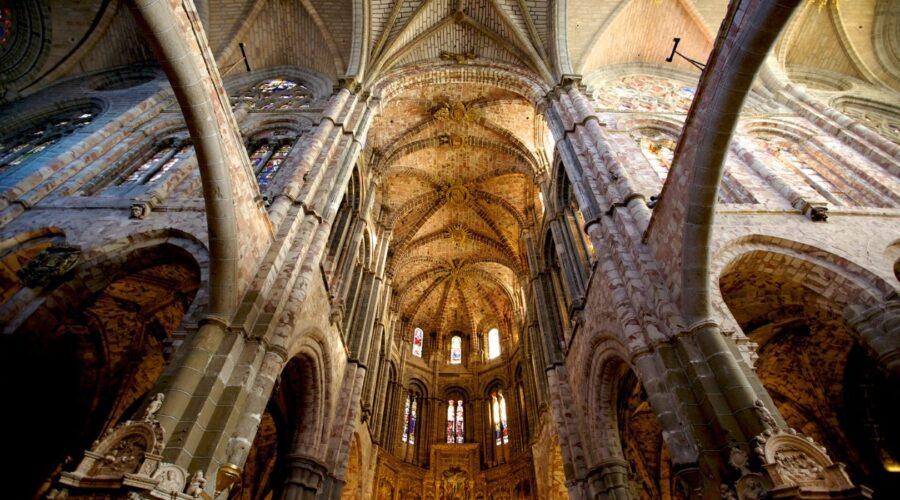
St. Irenaeus: Bishop, Theologian, and Defender of the Faith
Early Life and Education
Irenaeus was born in Smyrna, Asia Minor in the middle of the 2nd century. His parents were devout Christians. Irenaeus was raised in the Christian faith and received a thorough theological education. He studied under Polycarp, a disciple of the Apostle John. Polycarp’s teachings had a profound impact on Irenaeus, as he would later write about the need to preserve the apostolic tradition.
Bishop of Lyons
Around 177 AD, Irenaeus became the Bishop of Lyons, Gaul (present-day France). The church in Lyons was facing persecution and heresy. Irenaeus worked tirelessly to defend the faith against these challenges. He wrote several important theological works, including “Against Heresies,” which became a key text in the development of early Christian doctrine.
Theological Contributions
Irenaeus’ theological contributions were significant. He developed a systematic theology that emphasized the importance of the apostolic tradition. He also wrote extensively about the role of the Holy Spirit in the church. Irenaeus’ work was instrumental in shaping the development of the Nicene Creed, which is still recited by Christians today.
Against Heresies
Irenaeus’ most famous work is “Against Heresies.” This work was a systematic refutation of the major heresies of his time, including Gnosticism and Marcionism. Irenaeus argued that these heresies were based on false teachings and that the true Christian faith was based on the apostolic tradition.
The Apostolic Tradition
Irenaeus emphasized the importance of the apostolic tradition. He believed that the apostles had received the true faith from Jesus Christ and that this faith had been passed down through the centuries. Irenaeus argued that the apostolic tradition was the only reliable source of Christian doctrine and that all other teachings were heretical.
The Role of the Holy Spirit
Irenaeus also wrote extensively about the role of the Holy Spirit in the church. He believed that the Holy Spirit was the source of all truth and unity. Irenaeus argued that the Holy Spirit was present in the church through the apostolic succession and that the Holy Spirit was the guide of the church into all truth.
Legacy
Irenaeus was a prolific writer and theologian. His work was instrumental in shaping the development of early Christian doctrine. He was also a strong defender of the faith, and his work helped to protect the church from heresy. Irenaeus is considered one of the most important theologians of the early church and his work continues to be studied and used by Christians today.
Additional Resources
Conclusion
St. Irenaeus was a bishop, theologian, and defender of the faith. His work was instrumental in shaping the development of early Christian doctrine. He remains an important figure in Christianity today, and his work continues to be studied and used by Christians around the world.
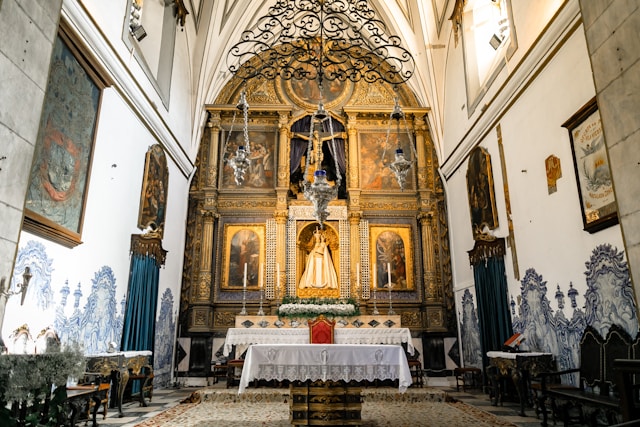
St. Mary Magdalene: A Detailed Exploration of Her Life, Faith, and Significance
Introduction
St. Mary Magdalene, renowned as one of Jesus Christ’s most devoted followers, has captivated the imagination of believers for centuries. Her story, shrouded in mystery and intrigue, offers profound insights into the nature of repentance, faith, and devotion. This comprehensive blog post delves into the life, faith, and significance of St. Mary Magdalene, providing a detailed exploration of her remarkable journey.
Historical Accounts of Mary Magdalene
Biblical accounts describe Mary Magdalene as a native of Magdala, a town on the western shore of the Sea of Galilee. She was first mentioned as one of the women who witnessed Jesus’ crucifixion and resurrection (Mark 15:40-41; 16:1-2). According to the Gospel of Luke (8:2), she was among the group of women who traveled with Jesus and his disciples, providing them with financial support.
After Jesus’ resurrection, Mary Magdalene became one of the first witnesses to his appearance (Mark 16:9-10; John 20:11-18). According to Christian tradition, she played a significant role in spreading the news of Jesus’ resurrection and became a prominent figure in the early Christian community.
Mary Magdalene in Apocryphal Gospels
In addition to the canonical Gospels, Mary Magdalene is also mentioned in apocryphal Gospels, which are not part of the official biblical canon. These texts offer additional insights into her life and character.
- Gospel of Mary: This text portrays Mary Magdalene as a prominent disciple of Jesus, receiving special teachings and instructions from him.
- Gospel of Philip: This Gospel suggests that Mary Magdalene had a close relationship with Jesus, referring to her as his “companion.”
Mary Magdalene as a Repentant Sinner
In Western Christian tradition, Mary Magdalene has often been identified with the unnamed woman who anointed Jesus’ feet with perfume and wiped them with her hair (Luke 7:36-50). This act was interpreted as a gesture of repentance and forgiveness.
The association between Mary Magdalene and the repentant sinner stems from a passage in the Gospel of John (8:1-11), where Jesus forgives a woman caught in adultery. Although the Gospel does not explicitly name the woman, many scholars believe it could refer to Mary Magdalene.
Mary Magdalene’s Significance in Christian Tradition
Throughout Christian history, Mary Magdalene has been revered as a symbol of repentance, faith, and devotion. Her story has inspired countless works of art, literature, and music.
In the Eastern Orthodox Church, Mary Magdalene is considered a Saint Equal to the Apostles, recognizing her significant role in spreading the Gospel message. In the Western Church, she is honored as a penitent saint, often depicted with a red cloak or a skull as symbols of her repentance.
Mary Magdalene in Modern Interpretation
In recent decades, there has been a renewed interest in Mary Magdalene’s story, particularly among feminists and scholars seeking to uncover the marginalized voices in the Bible. Contemporary interpretations of Mary Magdalene emphasize her strength, leadership, and intellectual curiosity.
Some scholars have suggested that Mary Magdalene may have been a more central figure in Jesus’ ministry than previously believed. They point to her presence at key events, such as the Last Supper and the crucifixion, as evidence of her importance.
Conclusion
St. Mary Magdalene remains a complex and fascinating figure in Christian history. Her story offers a multifaceted exploration of repentance, faith, and devotion. From her humble beginnings as a woman possessed by seven demons to her role as a prominent disciple and witness to Jesus’ resurrection, Mary Magdalene’s journey continues to inspire and challenge believers today.
Through her unwavering faith, Mary Magdalene teaches us the importance of seeking forgiveness, embracing God’s grace, and sharing the Gospel message with the world. Her legacy as a repentant sinner and a devoted follower of Jesus Christ serves as a reminder that even in our most broken moments, we can find hope, redemption, and transformation through God’s love.
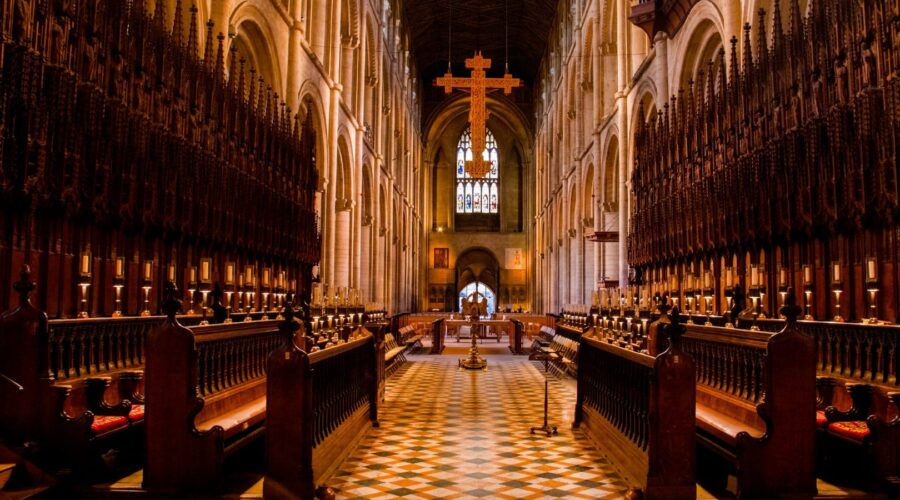
Chapel on the Hill: A Beacon of Faith and Architectural Wonder
Introduction
Nestled amidst rolling hills and whispering trees, the Chapel on the Hill stands as a testament to the enduring power of faith and the boundless creativity of human ingenuity. This iconic structure has captivated generations of pilgrims and visitors, inspiring awe and wonder with its magnificent architecture and profound spiritual significance.
History and Origins
The history of the Chapel on the Hill dates back to the 12th century, when a humble wooden chapel was erected on the site. Over the centuries, the chapel underwent numerous renovations and expansions, reflecting the evolving needs of the local community.
In the 19th century, the chapel was rebuilt in its current Gothic Revival style under the direction of renowned architect Sir George Gilbert Scott. Scott’s vision transformed the chapel into a masterpiece of Victorian architecture, characterized by its soaring spires, intricate stained-glass windows, and opulent interior.
Architectural Features
Exterior
The exterior of the Chapel on the Hill is a symphony of architectural elements that seamlessly blend beauty and functionality.
- Spires: Two towering spires dominate the chapel’s silhouette, reaching towards the heavens as a symbol of aspiration and divine connection.
- Gothic Arches: Pointed Gothic arches accentuate the chapel’s height and create a sense of grandeur.
- Stained-glass Windows: Intricate stained-glass windows adorn the chapel’s walls, depicting biblical scenes and casting vibrant hues throughout the interior.
Interior
The chapel’s interior is equally impressive, boasting an atmosphere of reverence and tranquility.
- Nave: The spacious nave, flanked by rows of slender columns, invites contemplation and worship.
- Altar: The ornate altar, intricately carved from marble and adorned with gold leaf, serves as the focal point of the sanctuary.
- Organ: A grand organ, with its pipes soaring towards the ceiling, fills the chapel with majestic music.
Significance and Symbolism
Religious Significance
The Chapel on the Hill is a sacred space for Christians of various denominations.
- Pilgrimage Site: The chapel has been a popular pilgrimage site for centuries, attracting believers from near and far.
- Worship and Prayer: Regular worship services and prayer gatherings are held within the chapel, providing spiritual nourishment and a sense of community.
Cultural and Historical Significance
Beyond its religious significance, the Chapel on the Hill is also a valuable cultural and historical landmark.
- Architectural Heritage: The chapel’s Gothic Revival style represents a significant era in British architecture.
- Historical Landmark: The chapel has witnessed countless events and milestones in the community’s history.
Visiting the Chapel on the Hill
Opening Hours and Accessibility
The Chapel on the Hill is generally open to the public during specific hours, except during special events or services.
The chapel is wheelchair accessible and provides facilities for visitors with disabilities.
Guided Tours
Guided tours are available for a small fee, offering visitors an in-depth exploration of the chapel’s history, architecture, and symbolism.
Tips for Visiting
- Respectful Conduct: The chapel is a sacred space, so respectful behavior is expected.
- Photography: Photography is permitted outside the chapel, but flash photography is not allowed inside.
- Dress Code: There is no specific dress code, but modest attire is encouraged.
Conclusion
The Chapel on the Hill is a remarkable synthesis of architectural beauty and spiritual significance. This iconic landmark stands as a beacon of faith, inviting pilgrims and visitors alike to experience its timeless grandeur and profound meaning. Whether seeking spiritual inspiration, admiring architectural masterpieces, or exploring the annals of history, a visit to the Chapel on the Hill is an unforgettable experience that will leave a lasting impression.

Our Lady of Mercy Church: A Historical and Spiritual Haven
History and Significance
Our Lady of Mercy Church, nestled in the heart of [city name], stands as a beacon of faith and a monument to the enduring legacy of Catholicism in the region. Its origins can be traced back to [date], when a group of devout Catholics gathered to establish a parish that would serve the growing community of [area name].
Over the years, the church has undergone several renovations and expansions to accommodate the expanding congregation. The current structure, completed in [date], is a testament to the dedication and architectural brilliance of its designers. It features a grand façade adorned with intricate carvings, elegant stained glass windows that filter sunlight into a symphony of colors, and a soaring steeple that reaches towards the heavens.
Architectural Highlights
Our Lady of Mercy Church is not only a place of worship but also a work of architectural beauty. Here are some of its notable features:
The Nave
The nave, or central aisle, is the heart of the church. Its lofty ceiling, supported by a series of graceful columns, creates a sense of spaciousness and awe. The walls are adorned with murals depicting scenes from the life of Christ and the Virgin Mary, adding to the sacred ambiance of the space.
The Altar
The altar, the focal point of the church, is a magnificent work of art. It is made of marble and adorned with intricate carvings and inlaid with precious stones. Above the altar hangs a large crucifix, a constant reminder of the sacrifice of Christ.
The Stained Glass Windows
The stained glass windows, depicting biblical scenes and symbols, are a breathtaking sight. They allow natural light to flood into the church, creating a kaleidoscope of colors that dance upon the walls and floor.
Parish Life and Community
Our Lady of Mercy Church is more than just a building; it is a vibrant community of faith. The parish offers a wide range of programs and events that cater to the needs of all age groups and demographics:
Mass Schedule
Mass is celebrated at various times throughout the week and on weekends. The parish website provides a detailed schedule of Mass times.
Sacraments
The church offers all the sacraments of the Catholic faith, including Baptism, Confirmation, Eucharist, Reconciliation, Anointing of the Sick, and Matrimony.
Education Programs
The church has a thriving Religious Education program for children and youth, as well as adult faith formation classes. These programs provide opportunities for spiritual growth and understanding of the Catholic faith.
Outreach Ministries
The parish is actively involved in outreach ministries that serve the needs of the community. These include a food pantry, a homeless shelter, and support groups for various issues.
Visiting the Church
Our Lady of Mercy Church welcomes visitors with open arms. Here are some tips for visiting:
Dress Code
While there is no formal dress code, visitors are encouraged to dress respectfully.
Parking
There is ample parking available in the church’s parking lot.
Accessibility
The church is wheelchair accessible and has ramps and elevators to ensure that all visitors can fully participate in worship services.
Location and Contact Information
[Church Address]
[Phone Number]
[Website Address]Conclusion
Our Lady of Mercy Church is a spiritual haven that has touched the lives of countless individuals throughout its rich history. Its stunning architecture, vibrant parish life, and commitment to serving the community make it a beacon of faith and a source of inspiration for all who visit. Whether seeking spiritual guidance, a sense of community, or simply admiring its architectural beauty, Our Lady of Mercy Church invites you to step inside and experience the transformative power of faith.
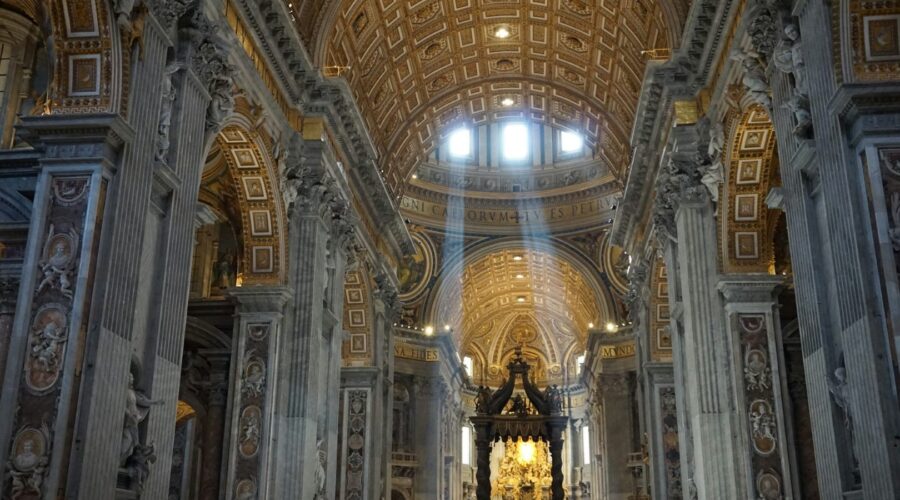
Assumption Catholic Church: Unveiling Its History, Beliefs, and Practices
Welcome to our comprehensive guide to Assumption Catholic Church, where we unveil the rich history, deep-rooted beliefs, and diverse practices that define this revered institution.
History of Assumption Catholic Church
Assumption Catholic Church traces its origins back to the 19th century. Here are key milestones in its historical journey:
- 1795: A small chapel is established in the area by Spanish missionaries.
- 1853: The cornerstone of the first Assumption Church is laid.
- 1895: The original church is destroyed by fire, and a larger structure is built in its place.
- 1951: The current Assumption Church building is dedicated.
Key Figures in the Church’s History
Several influential individuals have played a pivotal role in shaping Assumption Catholic Church:
- Father John Baptist de la Cruz: Founding pastor and instrumental in establishing the first church.
- Father Michael Shalloe: Oversee the construction of the current church building.
- Cardinal James Hickey: Served as the pastor from 1965 to 1972, later became the Archbishop of Washington, D.C.
Beliefs of Assumption Catholic Church
Assumption Catholic Church adheres to the core beliefs of the Roman Catholic faith. These include:
The Holy Trinity
The belief in one God who exists as three persons: the Father, the Son (Jesus Christ), and the Holy Spirit.
The Incarnation
The belief that Jesus Christ, the Son of God, became flesh and dwelt among us.
The Eucharist
The belief that the bread and wine consecrated at Mass truly become the Body and Blood of Christ.
The Assumption of Mary
The belief that Mary, the mother of Jesus, was bodily taken into heaven at the end of her earthly life.
Practices of Assumption Catholic Church
Assumption Catholic Church engages in a variety of practices rooted in its beliefs. These include:
Mass
A central liturgical celebration where the congregation gathers to worship God, receive Holy Communion, and hear the Word of God.
Penance and Reconciliation
A sacrament where individuals confess their sins and receive forgiveness from God through the mediation of a priest.
Baptism
A sacrament where individuals are welcomed into the Catholic faith and cleansed of original sin.
Confirmation
A sacrament where individuals receive the gifts of the Holy Spirit and are strengthened in their faith.
Matrimony
A sacrament that celebrates the covenant of marriage between a man and a woman.
Community Outreach and Social Justice
Assumption Catholic Church is deeply involved in community outreach and social justice initiatives. These include:
Assumptio Family Center
A center that provides a variety of social services to the local community, including food pantry, clothing distribution, and after-school programs.
St. Vincent de Paul Society
A charitable organization that assists individuals and families in need with financial aid, housing assistance, and other support services.
Conclusion
Assumption Catholic Church is a vibrant and enduring institution that has played a significant role in the lives of countless individuals over the centuries. Its rich history, unwavering beliefs, and diverse practices offer a tapestry of faith, community, and service. Through its liturgical celebrations, sacraments, and outreach programs, Assumption Catholic Church continues to be a beacon of hope and a source of spiritual nourishment for its congregation and the wider community.
Useful Links
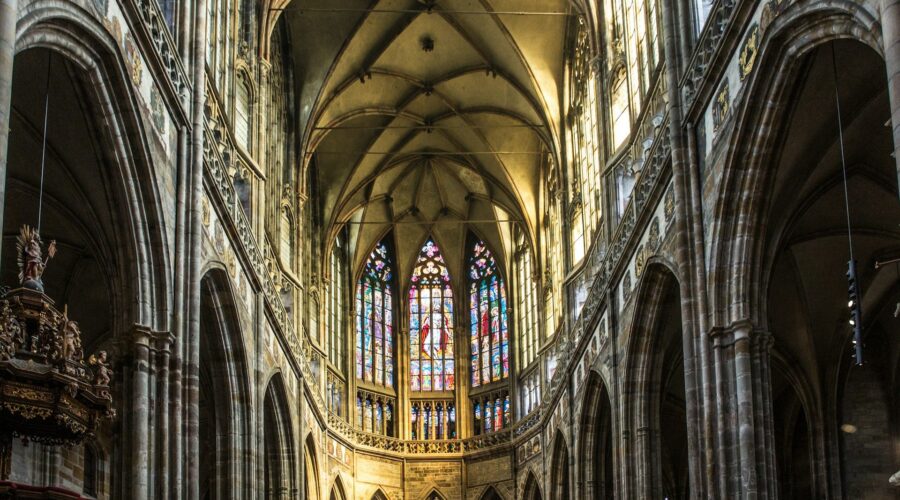
Unlocking the Doors of Faith: A Comprehensive Guide to St. Mark Catholic Church
A Beacon of Spirituality in the Heart of [City Name]
In the tapestry of faith communities, St. Mark Catholic Church stands as a vibrant beacon, drawing devotees and seekers alike to its hallowed halls. Nestled in the heart of [City Name], this historic parish has witnessed the unfolding of countless spiritual journeys, offering solace, guidance, and a deep sense of belonging.
History and Heritage: A Legacy of Faith
St. Mark’s origins can be traced back to the late [year], when a small group of Catholic families established a humble chapel on the outskirts of the city. Guided by the unwavering faith of its early members, the parish gradually grew, mirroring the expansion of the Catholic community in [City Name].
Over the decades, St. Mark’s has undergone several renovations and expansions, culminating in the construction of the magnificent Gothic Revival church building that stands today. Its soaring spires, intricate stained glass windows, and expansive nave bear witness to the unwavering commitment of the parish to its spiritual mission.
A Diverse and Welcoming Community
St. Mark’s embraces a diverse congregation from all walks of life, reflecting the vibrant tapestry of the city it serves. Whether you are a lifelong Catholic or a newcomer to the faith, you will find a warm and welcoming community at St. Mark’s.
The parish offers a wide range of programs and activities to cater to the varying spiritual needs of its members. From weekly Mass and prayer groups to faith formation programs and outreach ministries, St. Mark’s provides numerous opportunities for spiritual growth and service to the community.
A Sanctuary for Worship and Reflection
At the heart of St. Mark’s lies a profound reverence for the sacred. The sanctuary, adorned with exquisite artwork and symbolism, invites contemplation and a closer connection to the divine. Daily Masses and other liturgical celebrations provide a space for communal worship and the renewal of faith.
St. Mark’s also offers a dedicated chapel for private prayer and meditation. Here, amidst the soft glow of candles and the gentle murmuring of prayers, you can find solace, peace, and a sanctuary away from the noise of the world.
Education and Faith Formation
St. Mark’s recognizes the importance of ongoing education and faith formation for both children and adults. The parish boasts a thriving Catholic school, [School Name], which provides a holistic education grounded in Catholic values.
For adults, the parish offers a variety of programs designed to deepen understanding of the faith, including Bible studies, retreats, and discussion groups. These programs empower parishioners to actively participate in their spiritual journey and to share their faith knowledge with others.
Service to the Community
Inspired by the teachings of Christ, St. Mark’s is deeply committed to serving the broader community. The parish actively supports numerous outreach programs, including food pantries, homeless shelters, and assistance for those in need.
Members of the St. Mark’s community volunteer their time and resources to make a tangible difference in the lives of others. By reaching out to the marginalized and vulnerable, the parish embodies the Gospel’s call to love and compassion.
Reaching Out to the World
St. Mark’s recognizes its role as part of a global network of faith communities. The parish actively supports missionary efforts both at home and abroad. Members of the parish travel to distant lands to share their faith and provide assistance to communities in need.
Through partnerships with international organizations and sister parishes, St. Mark’s extends its reach beyond its local boundaries, promoting interfaith dialogue and fostering a sense of global solidarity.
Contact Information:
- Address: [Address]
- Phone: [Phone Number]
- Website: [Website Address]
Conclusion: A Lamp of Faith in the City
St. Mark Catholic Church stands as a testament to the enduring power of faith. For generations, it has offered a spiritual home to countless individuals, providing guidance, comfort, and a sense of community.
Whether you are seeking a deeper connection to God, pursuing a spiritual journey, or simply seeking a welcoming and inclusive faith community, St. Mark’s invites you to cross its threshold and discover the transformative power of faith.
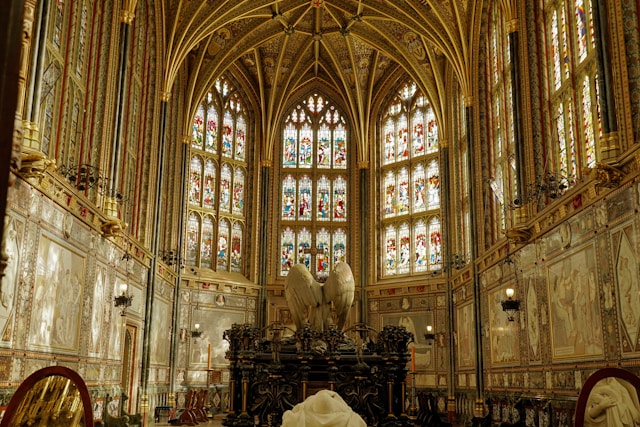
St. Barthélemy: A Caribbean Paradise Awaits
Introduction
Nestled in the heart of the Caribbean Sea, St. Barthélemy, affectionately known as St. Barth, is a captivating island that exudes a blend of French charm, pristine beaches, and timeless allure. This exclusive destination offers a unique blend of luxury, tranquility, and natural beauty that beckons travelers yearning for an extraordinary escape.
Historical Tapestry
Early Inhabitants
The earliest inhabitants of St. Barth were the Arawak Indians, who arrived from South America around 500 BC. They established a thriving community based on fishing and agriculture.
European Exploration
In 1493, Christopher Columbus discovered the island and named it after his brother, Bartholomew. However, it wasn’t until the 17th century that the French took possession of the island and established a permanent settlement.
Swedish Rule
From 1784 to 1878, St. Barth was under Swedish rule. This period left a lasting legacy in the island’s architecture, culture, and the name “Gustavia,” its capital city.
Return to French Sovereignty
In 1878, the island was sold back to France and became a French overseas collectivity.
Unveiling St. Barth’s Enchanting Sights
Gustavia: A Historical Harbor Town
Gustavia, the island’s capital, is a vibrant port town with a distinct blend of French and Swedish influences. Explore its charming streets, admire the colorful Creole houses, and visit the historic Fort Karl for panoramic island views.
Sheltered Beaches of Paradise
St. Barth boasts a stunning array of pristine beaches, each offering a unique experience. Whether you seek tranquility at Saline Beach, water sports adventures at Grand Cul-de-Sac, or celebrity sightings at Shell Beach, the island’s shores beckon with their crystal-clear waters and soft white sands.
Scenic Hiking Trails
For nature enthusiasts, St. Barth offers a network of scenic hiking trails that traverse lush hills, rugged coastlines, and breathtaking viewpoints. Ascend Morne du Vitet for panoramic vistas or explore the secluded Anse du Gouverneur coastline.
Art and Culture Extravaganza
St. Barth is a haven for art lovers, featuring an eclectic mix of galleries, boutiques, and cultural events. Visit the Vitet Art Gallery, browse local crafts at Artisan Market, and immerse yourself in the island’s vibrant art scene.
Savoring the Flavors of St. Barth
Gastronomic Delights
St. Barth tempts taste buds with an exquisite culinary scene influenced by French, Caribbean, and international flavors. From Michelin-starred restaurants to local bistros, the island offers an array of dining options that cater to discerning palates.
Fresh Seafood
With its abundant marine resources, St. Barth specializes in showcasing fresh seafood. Relish grilled lobster at Le Tamarin, savor a traditional Bouillabaisse at Eddy’s, or indulge in creative seafood creations at Shellona.
Local Delicacies
Don’t miss St. Barth’s unique culinary treats. Try the savory accras de morue (cod fritters), indulge in the sweet delight of Tourment d’Amour (coconut macaroons), and quench your thirst with a refreshing Ti’ Punch, the island’s signature cocktail.
Planning Your St. Barth Sojourn
Getting There
St. Barth is accessible by plane via Gustaf III Airport (SBH), which offers direct flights from major cities in the region, including San Juan, Puerto Rico, and Saint Maarten.
Accommodation Options
St. Barth offers a range of accommodation choices, from luxurious villas and boutique hotels to charming guesthouses. Consider Le Toiny, Cheval Blanc St-Barth Isle de France, or Le Sereno for an unforgettable stay.
When to Visit
The best time to visit St. Barth is during the dry season, which runs from December to April. This period offers warm and sunny weather, ideal for beach activities and outdoor exploration.
Tips for an Unforgettable St. Barth Experience
- Book accommodations and flights in advance, especially during peak season.
- Rent a car or scooter for easy exploration of the island.
- Respect the local culture and dress appropriately.
- Protect yourself from the sun with sunscreen and sunglasses.
- Enjoy the island’s nightlife, but drink responsibly.
Conclusion
St. Barthélemy is a captivating Caribbean paradise that weaves together French elegance, pristine beaches, and cultural delights. Whether you seek relaxation, adventure, or culinary indulgence, St. Barth offers an unforgettable escape that will leave you yearning for a return visit.
Immerse yourself in the island’s unique charm, explore its hidden gems, and create memories that will last a lifetime.
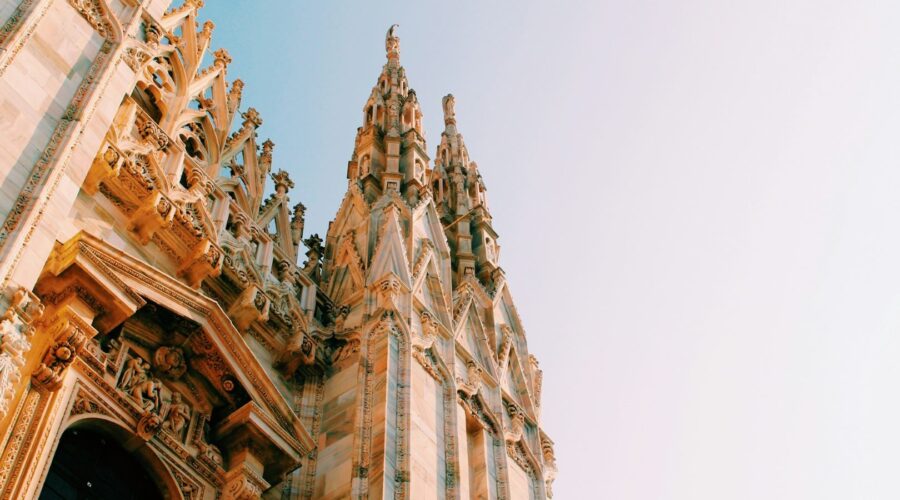
Discover the Rich History and Impact of St. Thomas Episcopal Church
About St. Thomas Episcopal Church
St. Thomas Episcopal Church is an historic and vibrant Episcopal parish located in the heart of New York City. Founded in 1823, the church has played a significant role in the religious, social, and cultural life of the city for nearly two centuries.
History and Architecture
The origins of St. Thomas Episcopal Church can be traced back to 1823, when a group of Episcopalians living in the Greenwich Village area of Manhattan established a mission church. The church was initially named St. Luke’s, but was renamed St. Thomas in honor of Thomas Jefferson in 1831.
The current Gothic Revival church building was constructed in 1868 and designed by the renowned architect Richard Upjohn. The exterior of the church is characterized by its pointed arches, buttresses, and stained glass windows. The interior of the church is equally impressive, with a soaring nave, vaulted ceilings, and intricate carvings.
Religious Life and Worship
St. Thomas Episcopal Church is a vibrant and inclusive parish with a diverse congregation. The church offers a variety of worship services throughout the week, including traditional and contemporary services, as well as special services for children and families.
The church also has a strong tradition of social justice and outreach. St. Thomas has been actively involved in a variety of social justice initiatives over the years, including the anti-slavery movement, the civil rights movement, and the fight against poverty.
Education and Outreach
St. Thomas Episcopal Church is committed to providing education and outreach to its congregation and the surrounding community. The church offers a variety of educational programs, including Sunday school, adult education classes, and lectures. The church also has a strong music program, with a choir, an orchestra, and a handbell choir.
St. Thomas Episcopal Church is also actively involved in outreach programs. The church runs a food pantry, a soup kitchen, and a homeless shelter. The church also provides financial assistance to those in need.
The Impact of St. Thomas Episcopal Church
St. Thomas Episcopal Church has had a profound impact on the religious, social, and cultural life of New York City. The church has been a center of worship, education, and outreach for generations. The church has also been a leader in the fight for social justice and equality.
Religious Impact
St. Thomas Episcopal Church has played a significant role in the religious life of New York City. The church has been a center of worship for Episcopalians in the city for nearly two centuries. The church has also been a leader in the Episcopal Church, hosting several important national and international conferences.
Social Impact
St. Thomas Episcopal Church has also had a significant impact on the social life of New York City. The church has been actively involved in a variety of social justice initiatives, including the anti-slavery movement, the civil rights movement, and the fight against poverty. The church has also provided a variety of social services to the community, including a food pantry, a soup kitchen, and a homeless shelter.
Cultural Impact
St. Thomas Episcopal Church has also had a significant impact on the cultural life of New York City. The church has been a center for music and the arts for generations. The church’s choir and orchestra have performed in some of the world’s most prestigious concert halls. The church has also hosted a variety of art exhibitions and lectures.
Visiting St. Thomas Episcopal Church
St. Thomas Episcopal Church is open to the public for worship, education, and outreach. The church offers a variety of worship services throughout the week, including traditional and contemporary services, as well as special services for children and families. The church also offers a variety of educational programs, including Sunday school, adult education classes, and lectures.
St. Thomas Episcopal Church is located at 1 West 53rd Street in New York City. The church is easily accessible by public transportation, and there is a parking garage located nearby.
Conclusion
St. Thomas Episcopal Church is a historic and vibrant parish located in the heart of New York City. The church has played a significant role in the religious, social, and cultural life of the city for nearly two centuries. The church is a center of worship, education, and outreach, and it is actively involved in the fight for social justice and equality. St. Thomas Episcopal Church is a welcoming and inclusive parish, and it is open to the public for worship, education, and outreach.
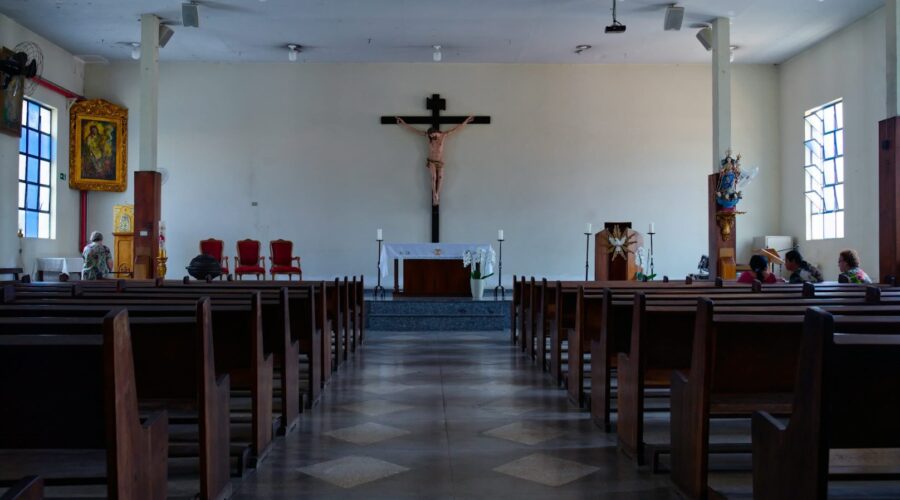
Explore the Historic Grandeur and Spiritual Significance of San Carlo al Corso
Nestled in the heart of Rome’s vibrant historical center, San Carlo al Corso stands as a testament to Baroque architectural splendor and a beacon of Catholic faith. This magnificent church, dedicated to Saint Charles Borromeo, captivates visitors with its intricate details, rich history, and profound spiritual significance.
History and Architectural Masterpiece
San Carlo al Corso was commissioned by the Cardinal Protector of the Lombard Order in 1610 and designed by the renowned architect Onorio Longhi. The church’s construction spanned several decades, with the facade being completed in 1669. The result is a harmonious blend of architectural styles, showcasing elements from the Renaissance, Baroque, and Mannerist periods.
Inspired by Saint Charles Borromeo
The church’s dedication to Saint Charles Borromeo, the 16th-century Archbishop of Milan, reflects the tremendous impact he had on the Catholic Church. Known for his piety, zeal for reform, and devotion to the sick and needy, Saint Charles Borromeo became a model of Christian leadership. His life and legacy continue to inspire the faithful to this day.
Baroque Splendor
The interior of San Carlo al Corso is a symphony of Baroque extravagance. Its soaring dome, adorned with frescoes depicting scenes from Saint Charles Borromeo’s life, dominates the space. The walls and ceiling are adorned with opulent paintings, sculptures, and intricate carvings that seamlessly blend art and devotion.
Highlights of the Interior
- Cappella Borromeo: The heart of the church, this chapel houses relics of Saint Charles Borromeo and showcases stunning artwork.
- Altar of the Blessed Sacrament: This grand altar, designed by Pietro da Cortona, features a tabernacle adorned with precious gems.
- Frescoes: The church’s ceilings are adorned with a series of frescoes by renowned artists such as Guido Reni and Carlo Maratta.
Spiritual Significance and Community
Beyond its architectural grandeur, San Carlo al Corso holds immense spiritual significance as a center of worship and community. It is a place where the faithful gather for Mass, prayer, and fellowship.
Devotion to Saint Charles Borromeo
Pilgrims from around the world visit San Carlo al Corso to pay homage to Saint Charles Borromeo. The church houses a statue of the saint, which is said to grant miracles to those who pray to him.
Community Center
The church also serves as a hub for the local community, offering a variety of programs and services. These include religious education classes, social gatherings, and outreach programs for the less fortunate.
Visiting San Carlo al Corso
If you plan to visit San Carlo al Corso, here are some tips to make the most of your experience:
Hours and Admission
The church is open daily from 7:00 am to 7:00 pm. Admission is free of charge.
Guided Tours
Guided tours are available upon request. Contact the church directly for more information.
Respectful Attire
When visiting a church, it is customary to dress respectfully. Avoid wearing shorts, tank tops, or revealing clothing.
Photography
Photography is permitted inside the church, but please be respectful of others during worship services.
Conclusion
San Carlo al Corso is a captivating masterpiece of architecture, a sanctuary of faith, and a vibrant community center. Its rich history, stunning beauty, and spiritual significance make it a must-visit destination for both tourists and pilgrims alike. Whether you seek inspiration, admire art, or connect with your faith, San Carlo al Corso offers an unforgettable experience that will stay with you long after your visit.

Discover the Enduring Legacy and Spiritual Treasures of St. Rita Church
A Cherished Beacon of Faith and History
Nestled amidst the vibrant streets of North Philadelphia, St. Rita Church stands as a testament to faith, architectural grandeur, and community spirit. Founded in 1850, this historic parish has witnessed over a century and a half of unwavering devotion and served generations of worshippers.
An Architectural Marvel
St. Rita Church boasts a breathtaking Gothic Revival design that has captivated hearts for centuries. Built from locally quarried Wissahickon schist, its towering spires and intricate stonework create an awe-inspiring presence. The interior is equally impressive, adorned with stained glass windows, vaulted ceilings, and intricate carvings.
Iconic Stained Glass Windows
The church’s stained glass windows are a symphony of color and artistry. Depicting biblical scenes, patron saints, and historical events, they illuminate the sanctuary with ethereal beauty. Visitors marvel at the intricate details and vibrant hues that bring the stories to life.
Monumental Organ
The Casavant Frères organ, installed in 1929, is a majestic instrument that fills the church with rich, harmonious sounds. Its 3,235 pipes, spread across three manuals and 47 ranks, create a breathtaking acoustic experience during Masses and concerts.
A Sanctuary for Devotion
Beyond its architectural splendor, St. Rita Church is a sanctuary for spiritual growth and community. The parish offers a wide range of services, including:
Mass Schedule
* Daily Mass: Monday-Friday at 7:00 am
* Saturday: 4:00 pm (Vigil)
* Sunday: 7:30 am, 9:00 am, 11:00 am (Solemn), and 5:00 pm (Spanish)Reconciliation
* Monday-Thursday at 4:30 pm
* Saturdays at 3:00 pmPrayer Groups and Devotions
* St. Rita’s Shrine (Monday-Friday at 9:00 am)
* Divine Mercy Chaplet (Sundays at 3:00 pm)A Vibrant Community Center
St. Rita Church is not merely a place of worship; it is also a thriving community center that serves the needs of its surrounding neighborhood. The parish offers a variety of programs and services, including:
Community Evening School
* Free tutoring and education for adults in the community
Senior Citizen Center
* Social activities, health programs, and support services for senior citizens
Food Pantry
* Assistance for families and individuals facing food insecurity
The Legacy of Saint Rita of Cascia
The church is named after Saint Rita of Cascia, an Italian saint known for her unwavering faith and devotion to God. St. Rita’s life has inspired countless individuals, and her shrine within the church is a popular pilgrimage site for those seeking miracles and intercessions.
Visiting St. Rita Church
St. Rita Church is open to the public for tours and visitation. Visitors are welcome to admire the architectural beauty, explore the shrine, and attend Mass.
Location and Contact Information
Address: 1166 S Broad Street, Philadelphia, PA 19146
Phone: (215) 339-0960
Website: www.stritaparish.orgConclusion
St. Rita Church is a living testament to the enduring power of faith, architectural brilliance, and community spirit. Its hallowed halls have witnessed centuries of worship, devotion, and service. Whether seeking spiritual guidance, artistic inspiration, or a sense of belonging, visitors and worshippers alike find solace and upliftment within its walls. As a beacon of light in the heart of Philadelphia, St. Rita Church continues to touch the lives of generations to come.